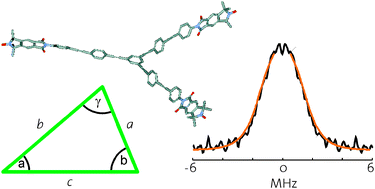Three-spin correlations in double electron–electron resonance†
Abstract
Distance measurements by pulse electron paramagnetic resonance techniques are increasingly applied to systems that contain more than two

- This article is part of the themed collection: Modern EPR spectroscopy: beyond the EPR spectrum

 Please wait while we load your content...
Please wait while we load your content...